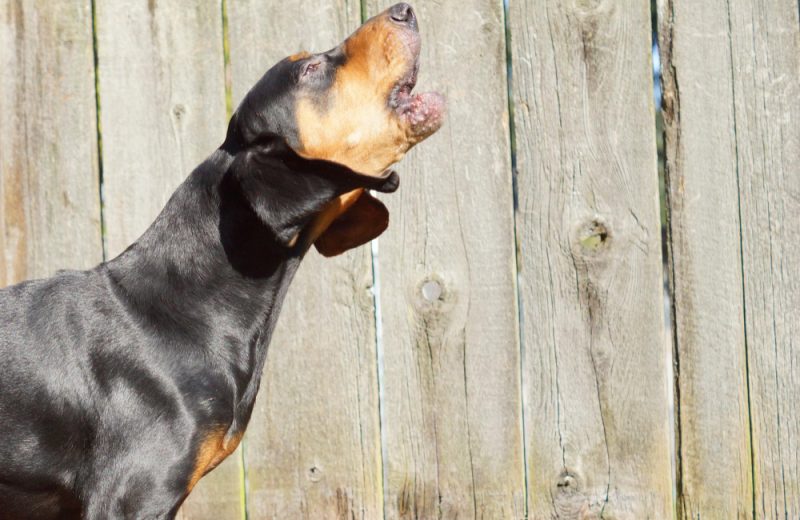
- Home
- Dog Behaviour
- What Do Raised Hackles on a Dog Mean?
What Do Raised Hackles on a Dog Mean?

You’ve probably seen it before—your dog spots something unfamiliar, and the fur along their back stands on end. This phenomenon is commonly known as raised hackles, and while it might look intimidating, it doesn’t always mean your dog is being aggressive. At Jordan Dog Training, we believe that understanding your dog’s body language is key to building a strong bond and preventing behavioural issues. Let’s break down what raised hackles really mean and how to respond when you see them.
What Are Hackles?
Hackles refer to the hairs along a dog’s shoulders, spine, and tail base that can stand upright due to a reflex known as piloerection. This is the same mechanism that causes humans to get goosebumps. It’s controlled by the autonomic nervous system, which means it’s involuntary—your dog isn’t doing it on purpose. Hackles rising is a natural response to emotional stimulation.
Hackles Are Often Misunderstood
One of the most common misconceptions is that when a dog’s hackles go up, it means they’re about to fight. While it’s true that hackles can rise in moments of tension, they can also appear during play, excitement, nervousness, or even curiosity. Raised hackles are simply a sign of arousal, not an automatic signal of aggression. It’s crucial to look at the whole context before jumping to conclusions.
Why Do Dogs Raise Their Hackles?
Raised hackles can be triggered by a range of emotions, and the context is key to understanding what your dog is feeling. Here are the most common reasons hackles might appear:
1. Arousal or Excitement
Some dogs will raise their hackles during high-energy play or in anticipation of something stimulating, like meeting a new dog or chasing a ball. In these cases, hackles are a sign of emotional arousal, not aggression.
2. Fear or Anxiety
When a dog feels nervous or threatened, hackles may go up as part of the fight-or-flight response. This can be accompanied by body language like lowered ears, tucked tail, or avoidance behaviours.
3. Aggression or Defensiveness
In more serious cases, raised hackles may accompany stiff posture, hard staring, or growling. The dog may be preparing to defend itself or its space. Always give dogs showing this body language plenty of space and avoid escalating the situation.
4. Uncertainty or Suspicion
Hackles can also rise when a dog is simply unsure about a person, another dog, or a strange environment. It doesn’t always mean trouble—it just means the dog is on alert and gathering information.
Understanding the Whole Picture
Hackles alone don’t tell the whole story. It’s important to look at your dog’s entire body language to interpret what they’re feeling. Ask yourself:
- Is the tail wagging softly, or held high and stiff?
- Are the ears forward, relaxed, or pinned back?
- Is the mouth relaxed, panting, or tense?
- Is the body posture loose and bouncy, or rigid and forward-leaning?
Some dogs raise hackles across the entire back, while others only raise the fur at the shoulders or the tail base. These patterns vary between individuals and aren’t necessarily linked to the intensity of their emotional state.
What Should You Do If Your Dog’s Hackles Go Up?
If you see your dog’s hackles rise:
- Stay calm – It’s just a sign that your dog is emotionally aroused.
- Avoid reacting harshly – Punishment can increase anxiety and worsen behaviour.
- Assess the situation – What triggered the reaction? Was it a dog, person, noise, or something else?
- Give space if needed – Especially if another dog or person is involved.
- Redirect – If appropriate, use a calm and cheerful voice to encourage your dog to disengage and move with you.
Can You Stop a Dog from Raising Their Hackles?
Since hackle raising is an involuntary response, you can’t train it out. However, you can help your dog feel more confident and less reactive in situations that trigger hackles. At Jordan Dog Training, we use positive reinforcement, desensitisation, and counter-conditioning techniques to help dogs build resilience and better coping skills.
Final Thoughts
Raised hackles aren’t something to fear—but they are worth paying attention to. They’re just one piece of the communication puzzle. When combined with a strong understanding of canine body language, recognising when your dog’s hackles are raised can help you step in early, avoid conflict, and support your dog’s emotional wellbeing.
If your dog regularly raises their hackles or struggles with reactivity, our experienced team of qualified dog trainers and behaviourists at Jordan Dog Training is here to help. Whether you need guidance through our Puppy School, private consultations, or group obedience classes, we’re here to support you and your dog every step of the way.
Disclaimer: The information provided in this blog is intended as general guidance and is based on our experience as dog trainers and behaviourists. It is not veterinary advice and should not replace consultation with a qualified veterinarian. If you have any concerns about your dog’s health, wellbeing, or mobility, we always recommend speaking with your vet to ensure the best care for your dog.

Justin Jordan
Master Trainer
- In-home behaviour modification consultations
- Puppy schools
- Obedience classes
- Specialist training
- Media enquiries
- Trainer opportunities
- Supplier enquiries
- Guest appearances
















